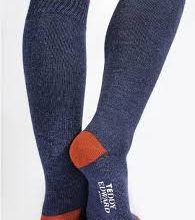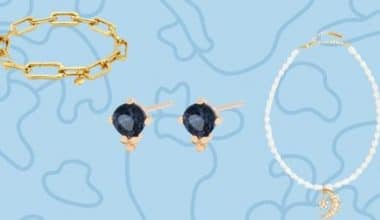The use of audible cues to establish a company’s identity is known as sonic branding, also known as audio branding, sound branding, or acoustic branding. This is now feasible because of advances in voice-enabling devices. According to research conducted by Deloitte Global, the smart speaker and digital voice assistant industries will reach $7 billion in 2018. By 2019, the smart speaker market will grow at a faster rate than any other connected device market on the globe, by a whopping 63%. Juniper Research forecasts that by 2023, almost 900 million voice-assistant-enabled devices will be in use in the United States. Machines improving in language support, accuracy, and simplicity will accompany that $40 billion industry, providing marketers with a wide range of opportunities in emerging sectors. To learn more about the Sonic logo, both the classic and new, its font and menu, read down to get more details.
Sonic Logo
It’s the equivalent in the sound of a company’s recognizable symbol. In most cases, a logo will consist of a single or two-color font alongside a simple icon representing the company’s mission. The company develops a look to boost brand awareness.
The same can be said of the sound logo. The most condensed version of a brand’s sound identity is a short sequence of notes (often between three and six) and distinct sound textures. Just like your visual brand, you want to plaster it all over the place. The company’s radio and television commercials, in-store playlists, promotional events, and other venues are all great places to play the song. You want people to think of your brand whenever they hear such sounds.
Therefore, how do we identify a high-quality audio logo as opposed to one that is subpar? The two most important qualities are recognizability and adaptability. Providing concrete examples will help clarify the process.
Below are the two characteristics of the sonic logo:
The Musical Identity Needs to Be Recognizable
Why bother with a sound logo if no one will ever hear it or associate it with your company? People will say things like “ah, I’ve heard this one before” and “oh, I know!” in response to a memorable audio logo. You can tell it’s from McDonald’s since this one is red. A large audience will recognize it as part of your brand immediately upon hearing it, proving that your first goal of widespread exposure has been met.
The initials are often reserved for well-known companies. A lot of folks recognize the audio branding but can’t quite put their finger on where they’ve heard it before. Businesses have spent a lot of money to achieve the “I’ve heard it before” impression, yet consumers are still completely unfamiliar with the brand.
So, what characteristics does a memorable aural logo need to have? That’s why it needs to be so easy. If there are too many notes, no one will remember them. Simply too complicated to keep in mind. And it must stand out from the crowd. Unique. It needs to be able to be recognized by a distinctive noise. It must be distinct from the noises of competing brands.
You Must Be Able To Adjust A Sonic Logo
People won’t be able to make the association between a brand and its audio logo if it isn’t consistent. However, you won’t pay attention to it if it never changes. In order to pique people’s curiosity, you need to offer them something completely new. To effectively communicate, a sonic logo must strike a balance between these two elements.
The Overall Picture of Sonic Logo
A sonic logo with a backstory makes the audience feel more connected to the brand as a whole. It was planned that way so that the colors, the creative, and the VO will all work together. All of these other assets can communicate with it in the same way. More importantly, it can be considered independent.
An audio logo with a backstory has gained legs, just like a visually compelling logo. A brand’s history may be gleaned from it in a flash. This ensures its continued airing on radio, television, and elsewhere, regardless of what comes before it in terms of branding, licensing, or silence. An alternative view, advocating for clarity and ease of use, can be found in the field of sound logos. The more you muddy up a sound with layers of sound design and wide sweeping effects, the more it will blend in with the other commercials, offers, and movie trailers.
That’s why it’s crucial that we hone in on the essence of what makes a fantastic audio logo. Finding a short, catchy sound that perfectly encapsulates a brand’s essence is like looking for a unicorn; once you find it, you’ve hit the jackpot, and it can be used to great effect. Less time at the end of communications for things like logos and closing frames is another issue we’re starting to run into (literally two seconds or less).
5 Excellent Sonic Logos
Some of the top-tier instances are as follows:
#1. TED
The TED logo is a wonderful example of auditory branding with a narrative. The brand’s mission is to disseminate information (their TED Talks are influential videos from expert speakers on education, business, science, tech, and creativity). The sound logo is a wonderful metaphor for a single drop of water and the waves it causes.
#2. McDonald’s
They are unrivaled in their reliability and consistency. The five-note whistle at the Golden Arches has been played for almost twenty years. This unwavering dedication to aural branding has allowed them to modify the sound for each and every ad campaign without sacrificing recognition or recognition value. The Minion’s calling!
#3. Apple
Perhaps the most well-known example of branded audio is Apple’s “bon gggg,” often known as the startup sound. The zen-like, serene, and refreshing look was deliberate, as its primary purpose was to welcome the user back into the Apple experience after a crash. Excellent planning that resulted in a globally recognized sound asset. In an aside, it makes us think of Underworld’s “Born Slippy,” and now you can’t unhear it.
#4. Colgate
MassiveMusic composed a new anthem for Colgate that captures the spirit of optimism around the world. A positive, short, and fast tune that can be hummed around the world and comprehended without regard to language limitations. Integration of the story with tactical considerations.
#5. O2
Our sonic logo for O2 is packed with meaning. The sonic logo, created to be highly adaptable so that it may exist throughout the vast touchpoint ecology of business, claims ownership of the human breath in a number of ways. That oxygen may permeate your own being, sustaining every thought and action.
What Does the Sonic Logo Mean?
There is no greater unifier among humans than a shared appreciation for good music. What better approach, then, to get people interested in your brand than with a catchy musical recollection of who you are? Simply put, a sonic logo is a musical note (or set of notes) that represents your brand. Netflix’s short, single-toned kick drum is very distinctive. It seems like everywhere you go, people are singing “Bada Ba Ba Ba, I’m loving it” about McDonald’s. We’re introducing our original sonic logo—the sound that, in the future, will instantaneously convey “iHeartRadio” without having to say a single word.
Did Sonic Change its Logo?
Sonic unveiled its new logo and brand design on January 31, 2020. The company’s signature arrowhead emblem was kept, but the wordmark and symbol were updated. Sonic’s new logo is an update on the company’s former design, which had blue letters and a red double-delta. Cherry Limeade is represented by the red type, while icy vanilla ice cream is represented by the blue.
Who Made the Sonic Logo?
During a session at the Game Developers Conference on March 21 in San Francisco, Sonic the Hedgehog creators Hirokazu Yasuhara (game designer) and Naoto Oshima (character designer) explained where the logo first appeared. As it turns out, flight jackets play a major role. Oshima had a special interest in aviation and the “nose art” that adorned the planes. That’s why he wrote it into Sonic’s canon, even though Sega never mentioned it in any of the canonical sources.
The first concept was that Sonic was completely imaginary. Instead, there was a pilot with a stellar reputation for speed. He also painted a hedgehog face on the nose of his plane. He earned the moniker “Hedgehog” for this reason.
What is the Main Purpose of Sonic Branding?
If you still need more convincing that your business needs sonic branding, consider the following 10 reasons:
- Obtaining first-mover status in a specific market
- Raise name recognition
- Brings Consistency to the Brand
- Facilitates segregation
- Improves memory of strong feelings
- Ultimately, it changes people’s minds for the better.
- Affects our emotions
- This brings to mind a crucial point
- Inspires us to take action
- Adds character to the brand
Classic Sonic Logo
Over the years, several Sonic logo font iterations have been released. Compared to his modern incarnation, the Classic Sonic logo font has a wider midsection and a shorter, rounder head and torso, not to mention shorter legs. Recent Sonic cartoons (Sonic Boom, 2014–2017) gave him longer legs and sharper angles.
However, it seems that Netflix will be using the 3D version of the spiky person in the show (the one in the middle in the image below, found in the 3D games not part of the Sonic Boom series). The classic sonic logo has a slimmer build than the original, but its shape isn’t as angular or elongated as it was in Sonic Boom.
Like the critically acclaimed Sonic Generations, Sonic Forces allows players to explore 3D and 2D logo environments as both the original Sonic and the classic Sonic. Dimensional travel even occurs, connecting both Sonics to the same timeline.
Both versions of the quick hedgehog appear heavily throughout the game, making it reasonable to draw comparisons between them and easier than ever to investigate their differences. Despite their obvious similarities, it would be a gross simplification to argue that the only difference between the two is their visuals. Here are the logo distinctions between the original Sonic and the classic Sonic.
#1. His Body
First, let’s address the glaringly obvious. In comparison to the current Sonic logo, the classic Sonic is noticeably shorter. Aside from his hands and skull, modern Sonic seems proportional due to his overall leaner build. Classic Sonic, on the other hand, is essentially a ball with limbs and a head, making him smaller and more comical in design (though they’re both fairly funny looking when you boil it all down).
#2. Currently Sonic Talks
Even while Tails briefs both Sonics on their missions, only one of them actually does something about it. Sonic from recent games frequently converses with other characters, like Tails, or the player, as he travels across the map. There is no voice actor or dialogue for Classic Sonic. The character also never spoke in the original games, so this makes sense.
#3. The Eye Color
In a game where you spend the better part of your time zoomed out following a hedgehog racing at breakneck speeds, it can be tough to pick out the little guy’s eye color. Thankfully, a satisfying zoom-in on the classic Sonic logo is unlocked after each level is completed, and gamers are far more adept than I am at unlocking all of the levels. From the logo, the old Sonic eyes in the 2D games have always been consistent black with a white pupil, but the classic and improved 3D Sonic had strikingly original green eyes. Both Sonics sport their signature eye color in Forces.
#4. The Key Is In The Thighs
It should come as no surprise that both Sonics require rapid travel. Interrupted runs of a few seconds allow them to gain enough speed to burst into a blurring sprint, reaching speeds that make it all but guaranteed that they will strike any forthcoming spikes. When traditional Sonic is sprinting, his legs look like they’re on motors, moving in what looks like entire circles at extremely high velocities, like the tires on a car. The majority of his upper torso remains stationary. From the logo, when classic Sonic performs this, it gives the impression that his entire body is swaying in time with the music because he is coated with a blue wind effect.
#5. New Sonic is the More Popular TV Personality.
I know it’s nitpicky to bring up the two Sonics’ distinguished television careers when contrasting them, but I feel it’s important to highlight the key contrasts between them. Both have had successful television careers, from the logo of the classic Sonic, which appears in 133 episodes spread across three separate programs. However, with 182 episodes of his own series, Modern Sonic has the upper hand thanks to Sonic Boom. The only thing left to do is decide who will be credited on IMDB for the new feature picture.
#6. The Naruto Shippuden Final Battle
There must have been a time in Sonic’s long life when he learned the ways of the shinobi. The original Sonic tucks his arms into his sides when he’s running at breakneck speeds. This is presumably to reduce his wind resistance. But when classic Sonic runs fast, he throws his long arms back and pulls them behind him like he’s dragging a wheelbarrow. Sonic’s running style, with his arms back, has been around for a decade, but it still conjures images of the ninjas of Hidden Leaf Village whenever it’s seen.
#7. Movable Sounds
While this is probably just due to how Sonic games have evolved over time, it’s still impressive that the Sonic Forces team got it right, given that practically all of Classic Sonic’s moves sound different than those in recent Sonic games. Jumping, getting struck, and rolling all feature comparable sound effects. However, from the logo, in classic Sonic games the tones are higher in pitch and more bouncy. The sound effects accurately reflect the difference between the two games.
New Sonic Logo
The public is not taking to the new Sonic logo font style. There has been much criticism of the company’s typography, with the backdrop form being compared to everything from a dog bone to the Budweiser bowtie.
Brand New(opens in new tab) offers a particularly nasty review: “The new frame… looks like a crooked bowtie on a sad party clown and the typeface is horrible… An excellent example of terrible work throughout.” To paraphrase Don McAllister, “It looks as gorgeous as their food is wholesome.” Gulp.
Next to read is the Sonic logo Font. Follow me as I give more details…
Sonic Logo Font
Before I continue, an important distinction needs to be made between the Sonic logo font and typefaces. In contrast to sonic logo font, which are specific implementations of a typeface, typefaces are collections of characters that share visual characteristics. Sonic logo Typefaces and font are differentiated by the specific characteristics they bring to a design; for instance, “Helvetica” is a typeface, whereas “Helvetica Bold Extended” is a font.
To be honest, I don’t know the difference between a sonic logo typeface and a font; I’m not a professional typeface designer. This isn’t a topic about typography; rather, it’s a discussion of the logo font used in Sonic the Hedgehog games and related materials, such as box art and promotional posters. Putting aside the typography lesson for a while, the purpose of this post is to discuss the typography of various Sonic the Hedgehog video game titles and related promotional and packaging materials.
To get things started, let’s take a look at the Sonic font logo. Even though I was aware that someone had made a font based on the Sonic logo, I was nevertheless taken aback to find a font that looked very much like it in the Sonic Mega Collection instruction booklet. A few months later, I learned that the brand name was Syntax Ultra Black. The Syntax font family was created by Swiss-type designer Hans Eduard Meier in 1968, and it was first commercially marketed in 1969 by the D. Stempel foundry in Frankfurt am Main, Germany.
Why is Sonic’s Fur Blue?
Sonic’s original appearance was that of a normal brown hedgehog. When he accidentally entered Dr. Ovi Kintobor’s lab, everything shifted. The good scientist shared his plans to create a device that would purge Mobius of all evil with the curious little hedgehog. Most graduate schemes on Mobius require the seven Chaos Emeralds, and Kintobor had already transferred most of the evil on the planet into the first six. But the seventh was essential to realizing his vision.
Because of his incredible speed, Sonic chose to assist Kintobor in his search for the seventh Emerald. Scientists ran research on the hedgehog because their interest was piqued by the animal’s special ability. To further lessen the impact of running friction on the hedgehog, he designed the now-iconic red and white footwear.
A large hamster wheel-like contraption that Kintober termed the Kinetic Gyratoscope was also developed by him to help Sonic run faster. However, when he raced faster and faster on the device, it eventually broke. He managed to break the sound barrier, but the resulting sonic boom was enough to wreck the machine. After the explosion, Sonic’s spines fused together, giving him his trademark appearance, and his original brown color was transformed into his signature blue.
Is Sonic Asexual?
To put it simply, it’s a little bit murky. To my knowledge, no media has shown any indication of coding in Sonic. Ultimately, Sonic the Hedgehog is only as queer as his writers and creators allow him to be. Fans are free to assign any sexual orientation they like to him if doing so helps them relate to him on a deeper level.
What’s Sonic’s Fastest Form?
No one could possibly foresee Hyper Sonic’s amazing strength. Compared to the previously described speeds, Hyper Sonic moves at a faster rate. He can actually travel at the speed of light, which is roughly 671,000,000 mph.
Who is Sonic’s Best Friend?
Best buddies Sonic and Tails. Sonic’s most devoted and loyal friend is Miles “Tails” Prower, who serves as both his sidekick and greatest friend.
What is Sonic’s Darkest Form?
In the Sonic X cartoon, Sonic the Hedgehog is able to morph into a powerful form known as Dark Super Sonic. This change was made possible by Sonic’s extreme fury and the abundance of bogus Chaos Emeralds.
It seems there are two flavors of Dark Sonic. black fur, quills that are pointed upwards, peach “skin,” and a deep purple glow emanating from his body after his change. However, when he undergoes the transition when supercharged, he takes on a look reminiscent of Super Sonic. There is still a shadowy purple halo about him, but his eyes now have no irises or pupils, his mouth is gone, his fur is black, and his skin is a dark gray.
Next to read is the Sonic food menu that can make your nerves relax after eating them.
You can’t drive anywhere in the United States for very long without passing a string of fast-food joints. Fast food restaurants are always bustling with hungry tourists, whether they be McDonald’s, Burger King, Taco Bell, or Subway. Whether you’re craving a unique milkshake or a deep-fried classic, Sonic has you covered. Let’s get the sonic details together so you can place a menu order before your next road trip. Below is the sonic menu that you can crave:
#1. The Cherry Limeade
Sonic Drive-cherry In’s limeade is probably their most well-known menu item. This cherry limeade is just one of Sonic’s seemingly infinite number of beverage options. You can choose drinks from sodas, teas, slushes, lemonades, limeades, and water with an almost unlimited range of mix-in possibilities and varied flavors.
However, cherry limeade is the best of the sonic beverages on the menu list. The sweetness and sourness of this drink are just right. While driving a long distance in the summer heat, this is the drink to have. The truth is that it’s perfect whenever you want it to be!
#2. Cheesy Sticks of Mozzarella
Okay, let’s look at Sonic Drive-In’s meal menu. The mozzarella cheese sticks are a crowd-pleaser and a personal favorite. More of a snack, these sticks are really delicious. However, they do come in a range of sizes to suit your level of hunger. They also include marinara sauce in a package for dipping.
A second option is ranch dressing. These are excellent substitutes for marinara, though we suggest tasting both to find your preference. These mozzarella sticks aren’t special in any way. According to the Sonic menu, these are “crisp on the exterior, gooey on the inside.” Typical of a mozzarella stick in every respect
#3. The Sonic Blast
The Sonic Blast is a great dessert menu choice if you’re craving something sweet. You can choose from a number of slushie flavor options, as well as milkshakes, hot fudge sundaes, and vanilla cones. If sweets are your thing, you’ll be in a dessert lover’s paradise with the menu at Sonic Drive-In, where you may choose from a dizzying array of options.
Wonderfully rich vanilla ice cream is topped with whichever cookies and candies you like. You can expect to get a taste of sweets in every spoonful. And the assortment of sweets is quite substantial. If you’re going to Sonic Drive-In, don’t be scared to experiment with your Sonic Blast as a menu by adding other toppings or flavors.
#4. The Soft Pretzel Twist
Many of us live hectic lives. Sometimes it’s tough to fit a half-hour or so of mealtime into a busy schedule. If you’re too busy doing chores to sit down for a full meal, a snack will do in the meantime. Fortunately, the Sonic Drive-In menu provides a wide variety of convenient snacks for people on the go.
Surely, a warm, soft pretzel is a universally appreciated snack? But we can guarantee that you have never had a Sonic burger on your menu before. They’re just the right portion to curb your appetite without leaving you feeling overstuffed. On top of that, this sonic menu is often baked to perfection, with a soft, fluffy interior and a faintly crispy exterior.
Topped with big flakes of salt for an extra zing and tanginess, the magic arrives when you dip the pretzel in the accompanying cheese sauce. When you’re craving something simple but satisfying, go to the Sonic Drive-In menu and order some pretzels. You will not regret it.
Why Does Sonic Wear a Scarf?
The scarf represents learning. The older Sonic would have passed a temple quickly. Donning a scarf, Sonic will travel swiftly inside that temple. Because of his scarf, he is unable to abstain from falling into traps, encountering ghosts, or even swinging from vines.
The scarf is a symbol of risk, but not of great peril. According to Sonic in a Scarf, the only way to end an old curse is to hit a mummified robot in the head three times. A raw aesthetic is represented by the scarf. Sonic may find a treasure using a scarf. He has the capacity to fall down a slope. He has a map at hand. Any object, even a goat, can be pointed out by him.
The scarf, in our opinion, will make it easier for you to picture Sonic as a modern-day version of Nathan Drake, the young Bastion figure, Assassin’s Creed Man, or the character from that game if Watch Dogs is a hit.
More importantly, we believe the scarf demonstrates how versatile Sonic’s persona can be. He is intelligent and fashionable. Even though he spent a lot of time collecting gold rings, Sonic is not a materialistic person. He is nuanced and, in many ways, is similar to a role Philip Seymour Hoffman might play. In the name of Sonic the Hedgehog, we sincerely lament Mr. Hoffman’s premature passing. We believe Sonic’s portrayal in Sonic Boom will be an appropriate memorial to the late actor.
What is Sonic’s Iconic Line?
The sonic iconic line is blue. The planet needs a hero. It’ll do for a hedgehog! A Hedgehog Begins to Shine.
What is The Motto of Sonic?
This innovation gave rise to the tagline “Service at the Speed of SoundTM,” which can be summed up in one word: SONIC. In 1959, Troy Smith Sr. changed the name of the establishment from Top Hat to SONIC Drive-In.
What is Sonic’s Secret?
The Frito Pie, Pickle- o’s, and the Dr. Pepper Orgasm (yep, you read that right!) are all on Sonic’s hidden menu. The hidden menu also includes the finest tots you’ve ever tasted, hot dogs, and sandwiches created to order.
Is There A Black Sonic?
Professor Gerald Robotnik, the great-grandfather of the show’s antagonist Doctor Eggman, invented Shadow, an artificial, anthropomorphic black hedgehog.
What Was Sonic’s Old Name?
Mr. Needlemouse was Sonic the Hedgehog’s original name throughout development. Thankfully, sane judgment won out. If you’ve ever wondered why Sonic looks so recognizable, it’s because a variety of pop culture figures had an impact on his design.
Who is Sonic’s Dad?
Jules Hedgehog, the spouse of Bernadette Hedgehog and the brother of eminent scientist Sir Charles Hedgehog, was the father of well-known freedom fighter Sonic the Hedgehog. Jules was killed while serving in the Royal Army during the Great War. He underwent roboticization for the first time in Mobian history, but the process stripped him of all feeling and willpower. Dr. Ivo Robotnik was dead, but they reunited in the year 3235 thanks to his brother’s use of a Power Ring to reclaim his free will. Due to his wounds from the Great War, Jules was the last robian when the Bem de-roboticized the entire planet. Despite this, he raised Sonic alone for a long time and even defended him on a few occasions.
Who is Sonic’s Evil Brother?
A character in the Sonic the Hedgehog comic book series and its spin-offs from Archie Comics is Scourge the Hedgehog, formerly known as Anti-Sonic or Evil-Sonic. He served as Sonic the Hedgehog’s complete opposite as well as Moebius’s overlord.
When Scourge was younger, the two hedgehogs occasionally fought as competitors. The Scourge used Master Emerald’s chaos energy to purposefully outperform Sonic when he and Rouge tried to take it. However, Scourge turned into a green-hued entity that could finally be separated from Sonic after Locke attacked the hedgehog while consuming energy from the Emerald.
Who is Sonic’s Wife?
Sally Acorn, the Mobius queen of her zone and the wife of King Sonic, was known as Queen Sally Acorn in the Light Mobius universe. She is a compassionate and selfless ruler who will sacrifice anything for her people. She married the despotic King Shadow in an effort to subdue him and shield her people from his anger, and this was when it was most obvious. Fortunately, she was able to wed Sonic thanks to Shadow’s defeat, and the two of them graciously presided over Mobius.
Who is Sonic’s Twin Brother?
One of the primary characters in the Sonic Underground television series is Manic the Hedgehog. He is an anthropomorphic hedgehog and the second son of Queen Aleena. He is the brother of Sonic the Hedgehog and Sonia the Hedgehog. The Manics played the drums in the band alongside their siblings. Along with Sonic and Sonia, he is a part of the Sonic Underground and the leader of the Freedom Fighters.
Related Article
- BEST BUY LOGO: Why is the Best Buy Logo Yellow? The Success Story!
- SPEAKER BRANDS: Top 15 Best Speaker Brands in the World (2023)
- EVERYTHING YOU NEED TO KNOW ABOUT EMPLOYER BRANDING
- COFFEE STOCKS: 5 Best Coffee Stocks 2023 ( + pricing plan )






